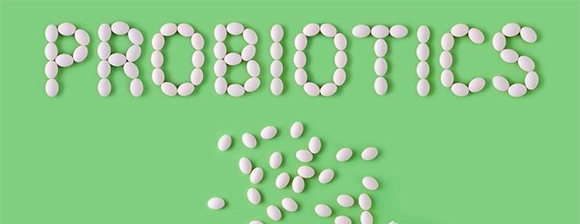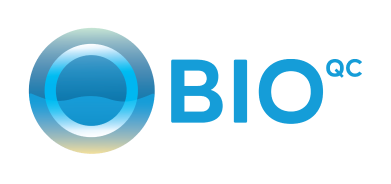
Why Use Microorganisms in Wastewater Treatment
Today, along with the modern development of industrialization and modernization, the increase in pollution problems is inevitable. Faced with the increasingly serious pollution problem today, especially water pollution; We cannot avoid this problem but must face and solve this problem. The treatment and disposal of contaminated water is a process. From building a treatment system, to checking and operating throughout the process to ensure consistent output water quality. The core of wastewater treatment is the use of microorganisms throughout the process and this is considered the main method throughout the treatment process.
1. Basic principles of wastewater treatment by microorganisms
Microorganism is a collection of many different types of organisms, which are very small in size and cannot be seen with the naked eye, but must be used with a microscope.
Features of microorganisms
- Microorganisms are small in size, grow and develop quickly in certain living conditions.
- Easy to absorb nutrients, increase biomass quickly.
- Large quantity, fast growth.
How to add microorganisms?
Today, the use of probiotics to supplement microorganisms is a common practice. Probiotics with ingredients include: Lactobacillus, Bacillus, Nitrosomonas, Nitrobacter, actinomycete, photosynthetic bacteria, yeast, etc. With the composition of beneficial microorganisms, not harmful to the environment It helps to decompose organic matter in wastewater.
Waste in water is a food source for microorganisms. Therefore, when adding probiotics, they will absorb and digest waste, multiplying to form a growing population. When all the waste is decomposed, the microorganisms will die and transform into the environment.
2.Comparison of wastewater treatment by microbiology with other treatment methods
Biological wastewater treatment is also known as biological wastewater treatment. We can understand wastewater treatment by biological methods as taking advantage of the growth and development of microorganisms to remove and destroy organic substances in wastewater.
Referring to the conventional wastewater treatment process, there are 3 main treatment processes. It is also known as mechanical (physical) treatment, chemical and physicochemical treatment, and biological treatment.
Mechanical treatment
Experiencing each stage of wastewater treatment, it must be treated by mechanical methods. The mechanical method is the initial stage treatment, only preliminary removing the basic criteria, so that the wastewater continues to the next process. This method is not very effective. This method is often combined with chemical and biological methods. Although this method only partially handles it, its role cannot be denied.
Treatment by chemical and physicochemical methods
This method is mainly used for industrial wastewater, various manufacturing industries, less used for domestic wastewater. This is because all types of industrial wastewater contain different pollutant components and are not just normal criteria, so it is impossible to use biological and biological treatment methods alone. which can be eliminated. Treatment by chemical and physico-chemical methods has the characteristics of high efficiency, use of chemicals is abundant, and easy to find. But it has the disadvantage of being expensive, and in the treatment process can sometimes produce some secondary pollutants, which are more harmful than the primary waste.
Biological treatment
It is a method of using microorganisms in combination with suitable pH, temperature, oxygen, etc. conditions, to produce microbial populations, serving the wastewater treatment process. Microorganisms will consume organic matter in wastewater as a food source. They will multiply and develop to form a new population. After a life process, the microorganisms will die and be washed out of the water stream, dragging the organic matter out, forming mud. The advantage of this method is that it is easy to implement, reasonably priced and has high efficiency. Wastewater treatment by biological methods is applied throughout, and most apply in different treatment systems.
Today, wastewater treatment is still the first priority to apply biological treatment. This method is indispensable in every type of wastewater, because of its high ability to simultaneously reduce BOD, COD, SS, Nito, P, ..in water. For other methods, it is not possible to reduce simultaneously, but only one or several.
Biological treatment has also demonstrated a thorough treatment effect, more than other chemical treatment methods, in the process of human treatment without direct impact. Microorganisms treat and decompose organic substances in wastewater, bringing the waste stream into the natural cycle of matter. The wastes are removed and treated according to the natural biological cycle. Ensure the quality of the output wastewater.
3.The currently popular wastewater treatment preparations.
The basic indicators in wastewater include: pH, SS, BOD, COD, Nitrogen, Ammonium, Phosphorus, etc. In addition, industrial wastewater, depending on the type of wastewater, has other pollution indicators. together. Usually in this case, chemicals must be used to treat. Probiotics can be used for both domestic and industrial wastewater.
- Reducing SS, BOD, COD, Nitrogen, Phosphorus, … used in aerobic environment: Aerobic Jumbo probiotics, Microbelift IND.
- Reducing BOD, COD, Nitrogen, Phosphorus,… used in anaerobic environment: Anaerobic Jumbo probiotics, Microbelift IND.
- Odor reduction: Microbelift OC. Can be combined with Microbelift IND to increase processing efficiency.
- Sludge treatment: Microbelift SA. Can be combined with Microbelift IND to increase processing efficiency.
- Grease treatment: Microbelift DGTT. Can be combined with Microbelift IND to increase processing efficiency.
- Total nitrogen treatment in aerobic environment: Microbelift N1. Can be combined with Microbelift IND to increase processing efficiency.
Above, is a brief overview of wastewater treatment methods, in which microbial treatment is the dominant method in the whole process.


